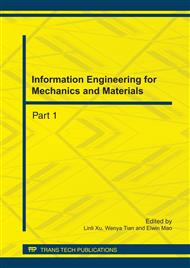p.860
p.865
p.870
p.875
p.880
p.885
p.889
p.894
p.899
Restraint of Period Doubling Bifurcation and Chaos Gait of the Biped Robot Based on Passive Dynamic Principle
Abstract:
Considering high sensitivity of the walking gait of the biped passive dynamic robot to its own parameters, the paper obtains a more simple and efficient restraint strategy by analyzing the restraint of the ankle-angle to the period doubling bifurcation and chaos, based on the model of humanoid forward-offset round feet. The forward offset round feet model is used to construct the dynamic equation of the passive walking and the numerical solution is for the final state of the model; while the robot’s own parameters are fixed and the slope is increased step by step, the gait features in terms of different phases of the angle are simulated and analyzed; then the self-adjustment of the gait shows that the restraint to the period doubling bifurcation or the chaos gait can be performed only by the adjustment of the ankle-angle. The result shows the superiority of our research on some aspects: the restraint to the period doubling bifurcation or the chaos gait, the reveal of the passive dynamic walking mechanism that parameters restrict each other, and the design of the control strategies in more complicated environment.
Info:
Periodical:
Pages:
880-884
Citation:
Online since:
July 2011
Authors:
Keywords:
Price:
Сopyright:
© 2011 Trans Tech Publications Ltd. All Rights Reserved
Share:
Citation:


